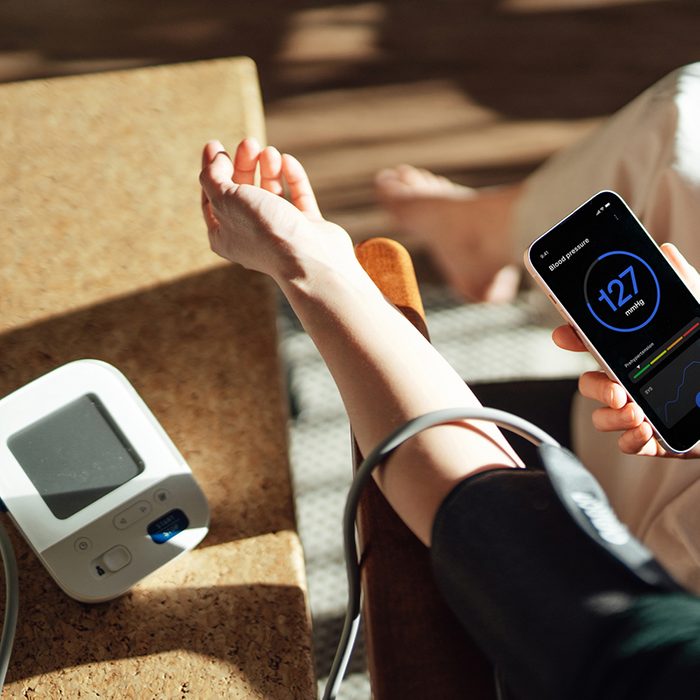
High blood pressure has been responsible for more deaths than any other condition or infectious disease combined, according to 2017 research published in the peer-reviewed medical journal, The Lancet. The Centers for Disease Control and Prevention (CDC) suggest half of Americans have high blood pressure—though many don’t even know they have it, and only 25% have their blood pressure under control.
Here’s part of what makes high blood pressure so tricky: The CDC says it usually causes no symptoms, so taking your blood pressure as often as you should is the only way to know if you have this “silent killer.”
This is why at-home blood pressure monitoring devices can be truly life-saving. The American Heart Association has shared evidence that home blood pressure monitoring is associated with a reduction in blood pressure and improved blood pressure control—possibly lowering the risk for chronic conditions, like heart disease and kidney disease.
4 Easy Ways You Can Measure Your Heart Health Yourself
How to use an at-home blood pressure monitor
Blood pressure monitors can be a life-saving tool, and studies have shown home readings may be more informative than those at the doctor’s office, says Nieca Goldberg, MD, medical director of Atria New York City, clinical associate professor of medicine at NYU, and host of the podcast Beyond the Heart.
But that’s only if you’re getting accurate blood pressure readings. A 2021 study from BMC Cardiovascular Disorders found that 60% of patients didn’t use their monitor correctly, jeopardizing the reliability of their results.
The first step is to get a home blood pressure monitor recommended by healthcare professionals for its accuracy and ease of use (read on for our experts’ top picks). Follow the manufacturer’s instructions—and if you have any concerns, ask your doctor to guide you through the device’s proper use. In general, Dr. Goldberg advises you to follow these best practices to ensure accuracy:
-
Avoid coffee 30 minutes before taking your blood pressure and empty your bladder—a full bladder can elevate blood pressure.
-
Take your blood pressure while seated in a chair with your back supported and feet on the floor.
-
Have the monitor on a table adjacent to the chair so your arm is supported while taking a reading.
-
Arm cuffs are more accurate than wrist monitors—make sure the cuff fits properly on bare skin (not over clothing). If it’s too big, your reading will be falsely lowered. Too tight, and it will be falsely elevated.
-
Relax for five minutes before starting the machine. Once you begin, no talking or texting.
Using Your Phone for This Many Hours Daily Causes High Blood Pressure, Says New Study
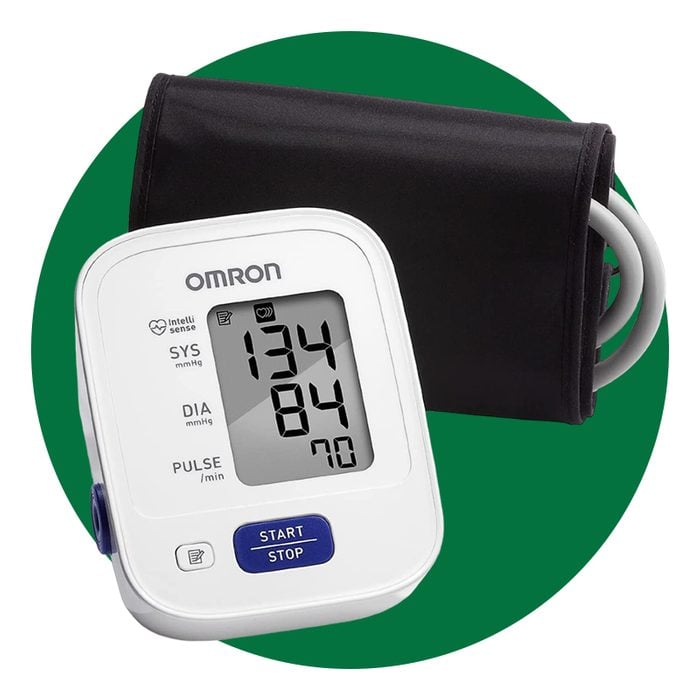
The best blood pressure monitors to use at home
Omron Upper Arm Blood Pressure Monitor, 3 Series
Yvonne Covin, MD, a practicing internal medicine physician in Dallas, TX, recommends this blood pressure monitor from Omron for its simplicity and ease of use. There’s a single button that starts the measurement, and readings are displayed in large, easy-to-read numbers. “If you want a no-hassles monitor, this is the one to get!” writes user Kay.
It’s worth noting that this particular model is not designed for remote monitoring by your doctor’s office or personal app, she says. It can store up to 14 readings, which can be manually recorded.
“Despite this limitation, the majority of my primary care patients find the Omron 3 Series appealing due to its simplicity, accuracy, and overall value,” she says. “While it may be less connected compared to other models, it still offers great value for those seeking a reliable blood pressure machine.”
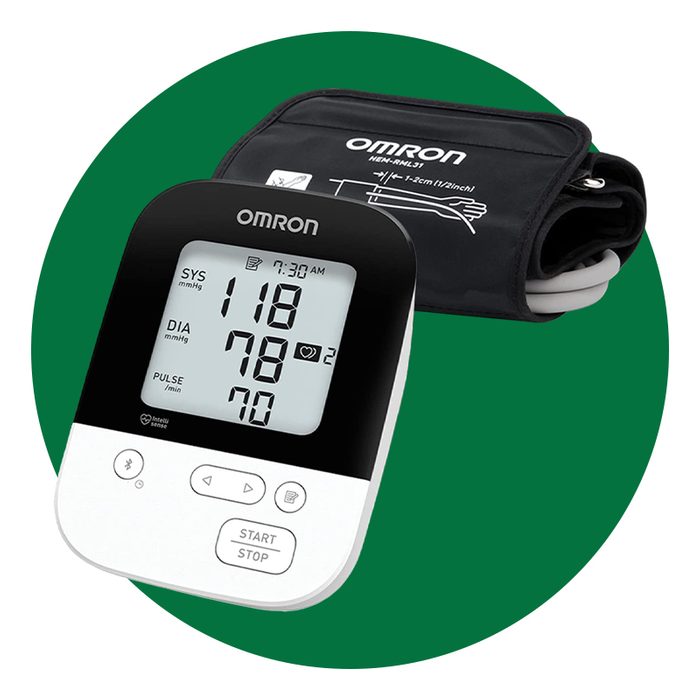
Omron 5 Series Wireless Upper Arm Blood Pressure Monitor
“I recommend the Omron 5 series for individuals who prefer to track their blood pressure using an app,” Dr. Covin says. “This smart device seamlessly connects to popular platforms like Alexa and the Apple Health suite”—which allows you to email your data to your primary care provider, enhancing decision-making processes like when adjusting blood pressure medications. “I never made a BP medicine titration or addition without BP home logs,” says Lowell Steen, MD, a cardiologist and advisor to 120/Life who also recommends Omron devices. “The last thing I want to do is make a change to treat an elevated BP when it’s actually normal at home.”
It can also provide valuable insights through alerts to previously unknown trends, she says, such as the impact of emotional stress or different activities on your blood pressure levels. “This is the most reliable blood pressure machine I’ve found to date,” writes user GlassCastles. “Add to that, Bluetooth updates the phone app seamlessly.”
This Nightly Habit Could Reduce Your Risk of Heart Disease, Says New Study
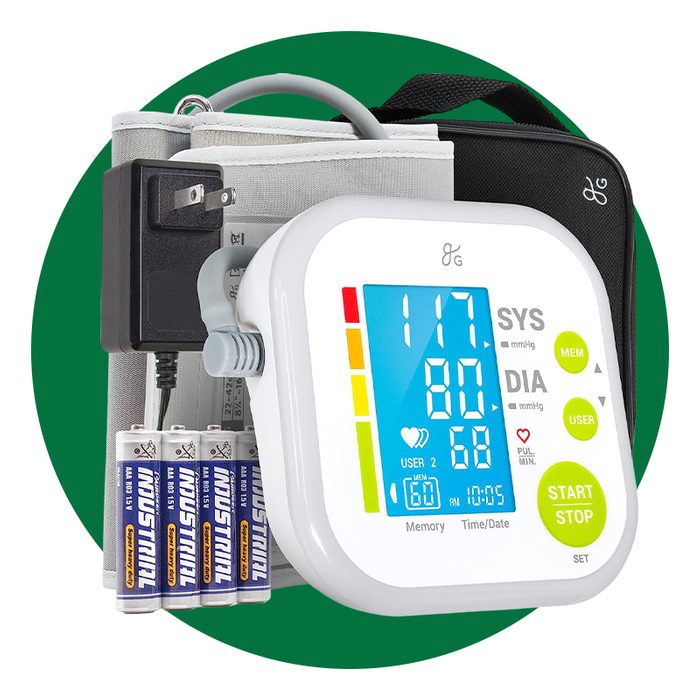
Greater Goods Blood Pressure Monitor Kit
“I recommend Greater Goods blood pressure monitor kit because it’s affordable yet efficient—[it’s] under $40 and built to last,” says Nancy Mitchell, RN, a registered nurse who works with geriatric patients. It comes with an app that enables you to track readings and review your blood pressure trends with your doctor.
The Greater Goods blood pressure monitor is also well-regarded for its accuracy. “We tested this monitor for accuracy at my cardiologist’s office, and it’s calibrated correctly—it was spot on,” writes user ZenGirl. “I typically can’t see without my glasses, but I have no problem reading the large digits on the screen.”
9 Sneaky Female Heart Attack Symptoms Women Might Be Ignoring
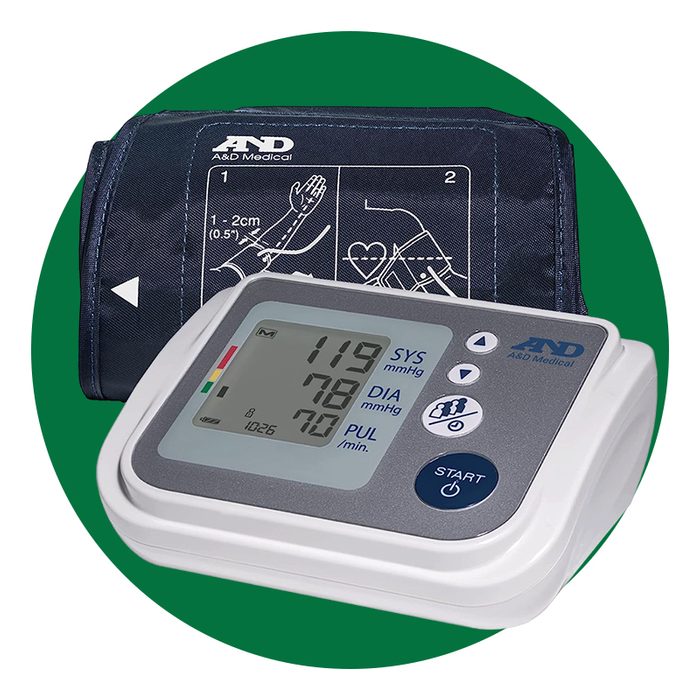
A&D Medical UA-767F
“One of the best ways to know if you’re getting an effective, reliable monitor is to check out the American Medical Association’s (AMA) list of validated devices,” says Mahmud Kara, MD, a doctor of internal medicine and founder of KaraMD. This AMA-approved monitor from Withings is another reliable option for those after a smart device.
According to user The Tenneys, setup is quick and easy, the unit is accurate and easy to use, the app is great and up-to-date (and free), it integrates with Apple Health and other health platforms, and it’s sleek and portable. “The readings were spot on with [my doctor’s] professional gear,” they write. “Since purchasing, this has made it quick, easy, and painless to test my BP two to three times a day to track my hypertension and the effectiveness of my medication and increased exercise.”
Say well inside and out with The Healthy @Reader’s Digest newsletter, Keep reading:
